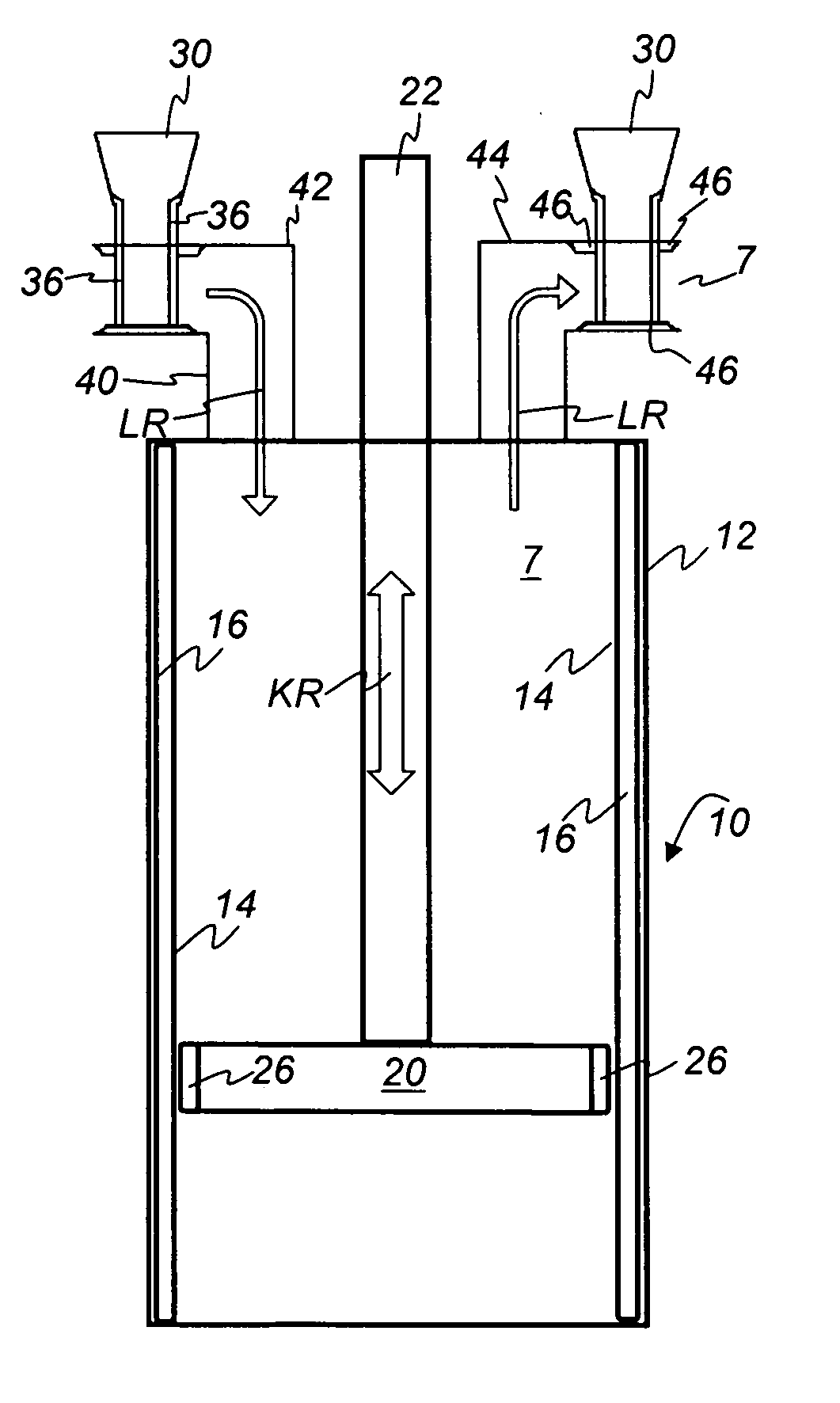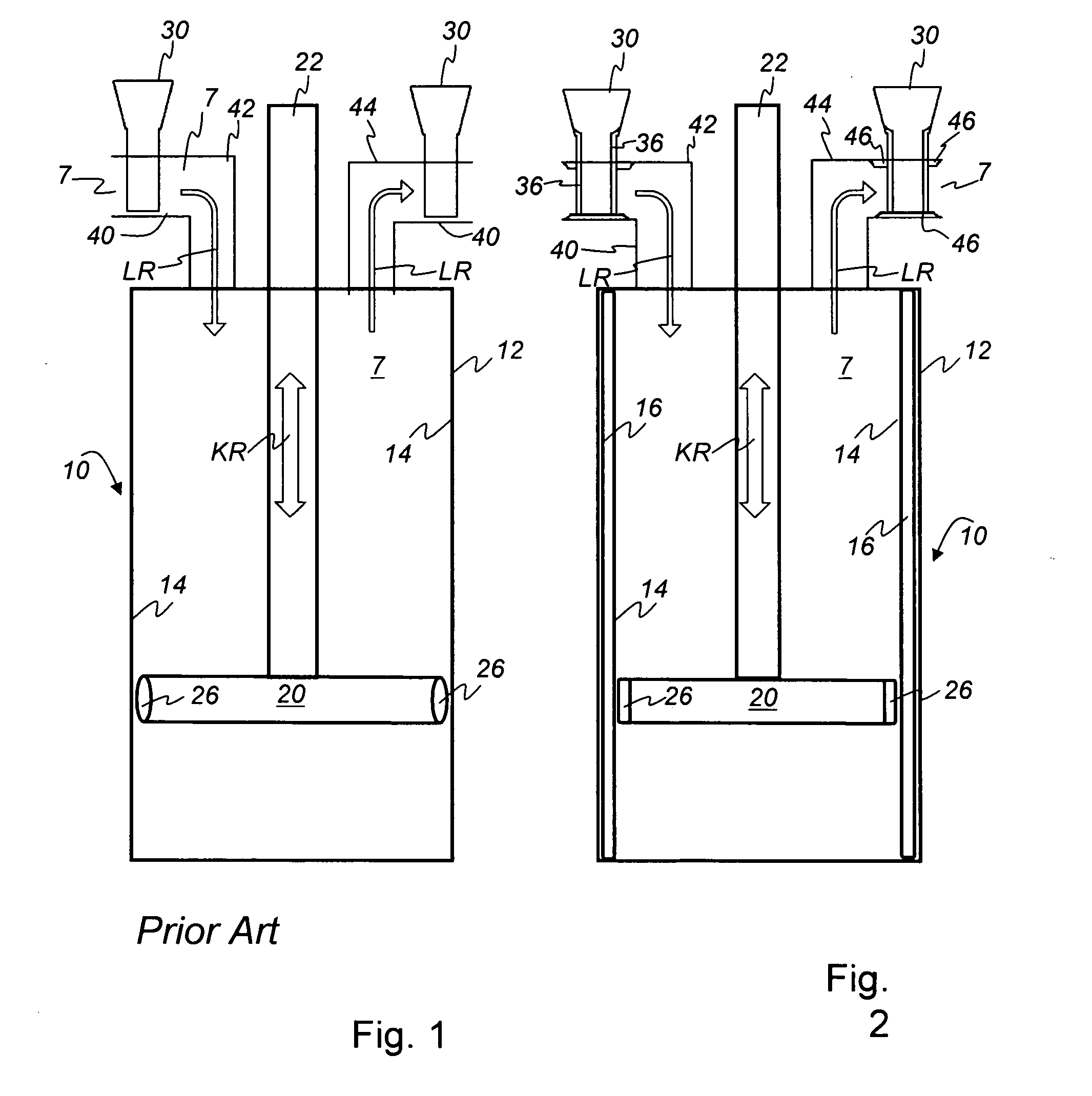Device and piston for segregating articles
a technology of segregating devices and pistons, which is applied in the direction of non-electric variable control, process and machine control, instruments, etc., can solve the problems of high cycle rate, and high coefficient of friction of soft sealing materials, so as to reduce friction coefficient, reduce the effect of friction coefficient and low adhesion to other materials
- Summary
- Abstract
- Description
- Claims
- Application Information
AI Technical Summary
Benefits of technology
Problems solved by technology
Method used
Image
Examples
Embodiment Construction
[0033]The same reference numerals were used for elements of the invention that are identical or that have the same effect. Moreover, for the sake of clarity, the only reference numerals shown in the individual figures are those that are necessary to describe that particular figure. The embodiments shown constitute only examples of how the device according to the invention or the method according to the invention can be configured and do not constitute a definitive limitation.
[0034]FIG. 1 schematically shows a cross section through a cylinder 10 for a device 1 known from the state of the art for segregating articles 3 (see FIG. 4). The cylinder 10 is part of a segregating element 5 (see FIG. 4) of the device 1.
[0035]Inside the cylinder 10, there is a piston 20 with a piston rod 22 which are both moved in the piston direction PD into or out of the cylinder 10. Articles 3 that have been detected as being defective are pushed off of a conveyor belt 2 (see FIG. 4) by the piston rod 22. P...
PUM
 Login to View More
Login to View More Abstract
Description
Claims
Application Information
 Login to View More
Login to View More - R&D
- Intellectual Property
- Life Sciences
- Materials
- Tech Scout
- Unparalleled Data Quality
- Higher Quality Content
- 60% Fewer Hallucinations
Browse by: Latest US Patents, China's latest patents, Technical Efficacy Thesaurus, Application Domain, Technology Topic, Popular Technical Reports.
© 2025 PatSnap. All rights reserved.Legal|Privacy policy|Modern Slavery Act Transparency Statement|Sitemap|About US| Contact US: help@patsnap.com



